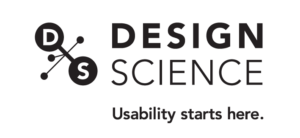As we saw in a previous post (Getting to the Root) predicting human behavior and responses can be complex. Not only is human behavior unpredictable, but each user population comes with its own set of unique challenges. In this post, we will focus on ways that a well-trained moderator can engage adolescent participants and motivate them to be responsive with their feedback.
Before starting a usability session, it is crucial for the moderator to understand what makes working with adolescents different than working with adults. The study moderator has two primary responsibilities: conduct the usability session while observing how the participant interacts with the testing device and conduct root cause analysis to uncover underlying motives behind use behavior.
Since the end goal of usability testing is to gather user insights, the study moderator is tasked with quickly building rapport with the study participant. This allows the participant to open up and provide insight into their experience. While developing rapport with adult participants can be a difficult task, it often proves to be more challenging with adolescents who might be nervous about the session, clam up quickly, or disengage altogether.
Here are some ways to connect with your adolescent participant and ensure that your root cause analysis yields helpful insight about your session.
1. Connect before the session
 Utilize the time before the session to get to know the participant. Pay attention to the participant’s fashion sense and how they occupy their time while waiting in the reception area. This can give you some insight into their interests and personality.
Utilize the time before the session to get to know the participant. Pay attention to the participant’s fashion sense and how they occupy their time while waiting in the reception area. This can give you some insight into their interests and personality.
Once you are face-to-face, you can build rapport through conversation. Be sure to encourage communication by being kind and sincere during the meet and greet. You can start a dialogue based on what you have observed about the participant’s appearance and behavior. Paying a compliment can also help break down the participant’s guard. If this does not inspire conversation, try talking about school. They should have plenty to say about this topic.
2. Tailor to the participant’s character
Usability sessions with adolescent participants are analogous to sessions with adult participants in terms of protocol adherence, study environment, and use tasks. However, adolescent sessions should be more casual and move at a slower pace as this user group may have difficulty relating to simulated use and testing environments.
The testing room is often filled with medical devices, 
simulation mannequins, video equipment, and data collection tools. These may be appealing or unnerving to the participant. You should adjust the tempo and tone of the session to reflect the character of the participant.
If the participant is ready to begin the session, you can start without much focus on the simulated environment or study procedure. Conversely, if the participant seems apprehensive or nervous, provide time for the participant to acclimate to their surroundings and to ask any questions about the environment or procedure. Explicitly drawing attention to potential distractors will help the participant habituate to the testing environment, reduce test artifacts, and focus the participant on the task at hand.
3. Adopt their communication style
 While making the participant comfortable with the testing environment, you can also adopt the participant’s manner of speaking. You should be able to assess the pre-session conversation with the participant and apply aspects of their speech to the study script and conversation.
While making the participant comfortable with the testing environment, you can also adopt the participant’s manner of speaking. You should be able to assess the pre-session conversation with the participant and apply aspects of their speech to the study script and conversation.
If the participant is an inflective speaker, be an inflective speaker. If the participant speaks slowly, speak in the same manner. If the participant uses slang, implement their wording into the dialogue. Matching the participant’s cadence and language will integrate empathy into the session, help the participant feel at ease, and solidify the rapport between the study moderator and participant.
4. Pay attention to mood and body language
To create a relaxed atmosphere, be cognizant of your demeanor and seek ways to downplay the imbalance of power between yourself and the participant. Whenever possible, you should be on the same physical plane as the participant and stay at eye level with them. Adjust your posture to seem more inviting. For example, hunching over while resting your elbows on your lap and leaning in will communicate that you are paying attention and trying to connect with the participant. Mirroring the participant’s body language, especially when they are relaxed, will further develop the moderator-participant connection.
Throughout the study, be mindful of the participant’s nonverbal communication. Be on the lookout for participants who have crossed arms, a lack of eye contact, negative facial expressions, or are staring off into space. This indicates that they are uncomfortable and possibly not receptive to the study. By observing the participant’s body language, you can gauge if the participant becomes disinterested and adjust your body language to re-engage them.
If body language modifications do not help, unleash your inner comedian and crack a joke! This should normalize the situation and help the participant let down their guard.
5. Adapt your analysis
 Developing a connection with the participant makes it more comfortable for them to communicate their insights during root cause analysis. Many usability sessions are lost during this segment of the study because the participant feels reticent to respond or worries they did something wrong. Adolescent participants can be very sensitive to root cause probing, as the line of questioning can seem like an interrogation. This view may lead the participant to clam up and provide vague responses like the dreaded “I don’t know.”
Developing a connection with the participant makes it more comfortable for them to communicate their insights during root cause analysis. Many usability sessions are lost during this segment of the study because the participant feels reticent to respond or worries they did something wrong. Adolescent participants can be very sensitive to root cause probing, as the line of questioning can seem like an interrogation. This view may lead the participant to clam up and provide vague responses like the dreaded “I don’t know.”
Easing into root cause analysis can mitigate these “road block” responses. Asking broad questions that require creative, descriptive comments about device improvements will prime the participant to be more vocal during root cause probing. After broader questions, the study moderator can smoothly transition into questions regarding specific use behavior.
Root cause probing can be the most exciting segment of the session because the study moderator can determine the cause of particular use behavior. It can also be highly engaging for adolescent participants as they utilize their creativity to provide insightful design recommendations for the device or IFU in question.
------
Try some of these tips the next time you are moderating a usability study with adolescent participants. If you keep the mood relaxed, crack some jokes, and engage the participant to get them talking, you will experience the insights and creativity of a young mind. It just might be what you need to transform a good device into a great one.
This post was edited by Lindsey Stefan.
Share this entry
-
Share on Facebook
Share on Facebook
-
Share on Twitter
Share on Twitter
-
Share on Google+
Share on Google+
-
Share on Linkedin
Share on Linkedin
-
Share by Mail
Share by Mail











